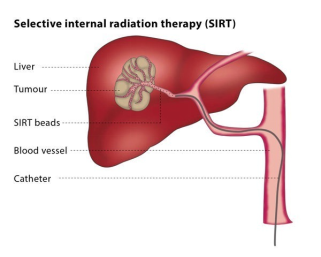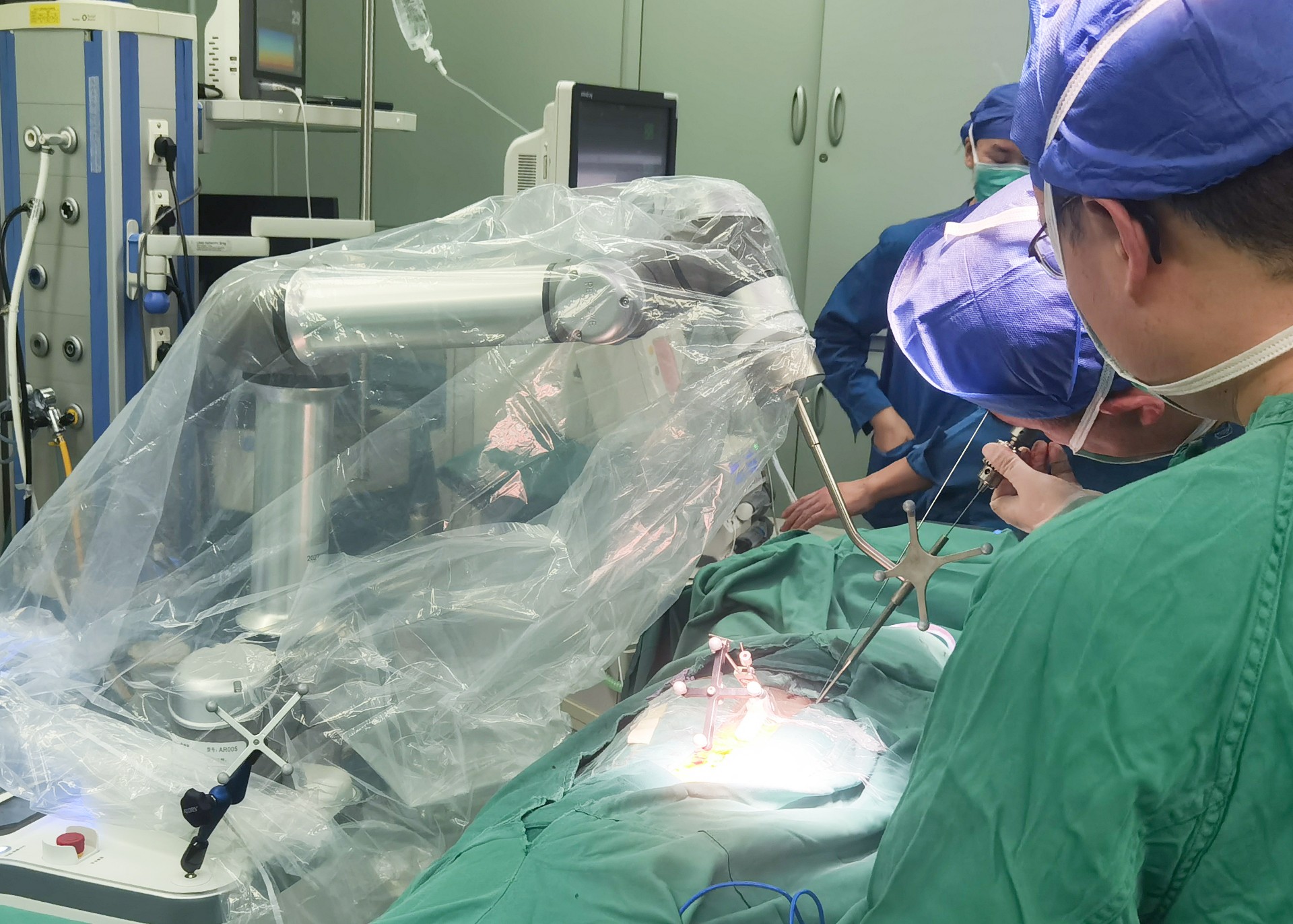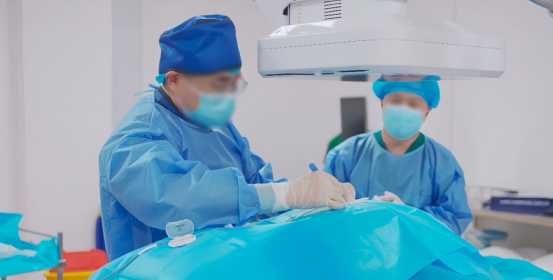
China’s first licensed liver cancer surgery of radiation therapy using Y-90 has been performed.
The first licensed liver cancer surgery of selective internal radiation therapy (SIRT) using Yttrium-90 (Y-90) was performed on October 10th in Haikou, China. It marks the arrival of new international precision interventional program in the field of treatment for malignant liver tumor.

Dong Jiahong, member of Chinese Academy of Engineer acclaimed that the success of the procedure means that patients suffer from liver cancer in China can finally receive advanced SIRT. By precisely injecting the Y-90 microspheres into the arteries, it can realize downstaging treatment or potential cure for stage III and stage IV liver cancer patients.
The 34 years old male patient underwent the treatment had long term history of hepatitis B. After several rounds of examination, he was diagnosed with hepatocellular carcinoma (CNLC IIIa), which had beyond the standard of liver transplantation. As the liver remnant volume was under 40%, it was unable to perform liver resection. After multiple rounds of discussion by MDT and oversea experts, SIRT with Y-90 microsphere was considered to be the best option for treatment.

During the press conference, both Dr. Zhang Lin from hepatobiliary intervention department of Beijing Tsinghua Chuanggung Hospital and Dr. Niu Huimin from Hainan Cancer Hospital briefed procedure for reporters. The procedure has been done perfectly. We insert the micro catheter into the target arteries which provide bloodstream for the tumor, and successfully delivered the Y-90 microsphere into the tumor. The patient had a stable vital sign in the operation which lasted less than 1 hour began at 10:00 am. Said Dr. Zhang.

3 days after surgery, patient’s physiological indices has returned to normal. No any signs of discomfort.

Yttrium-90 (Y-90) microsphere is the first microsphere officially approved by FDA. It has been used for treatment to more than 120,000 people around the world. No obvious side effect has been spotted.
Deep reading
Selective internal radiation therapy (SIRT)
What is SIRT?
SIRT is a radiation treatment for cancer. In this procedure, a radiation source called yttrium-90 is administered in small beads delivered through the blood stream into the organ affected by cancer.

How does the procedure work?
First the interventional radiologist will map out the blood vessels of the organ, and may block some of them to ensure the spheres only go to the tumor. Once this is done, a catheter (small tube) is placed inside a blood vessel that goes directly to the organ affected by cancer. The interventional radiologist will guide the catheter close to the tumor and then will administer the specially prepared beads that contain the radiation. When the beads land in the tumor, they emit a form of radiation energy that kills the cancer cells over a short distance around the bead.

What dose PLX7100A can do in the procedure?
The high frequency FPD mobile digital C-arm system can applied to interventional radiology, oncology, vascular surgery, general surgery, gastroenterology, urology, orthopedics, and traumatology. The ”12” large flat panel detector provides wider and more stable fluoroscopy images during multiple clinical use. Surgeries like SIRT, transcatheter arterial chemoembolization (TACE) , thrombectomy, angioplasty, endoscopy retrograde cholangiopancreatography (ERCP) and so on have been successfully performed every year.

Why perform it?
The aim of the procedure is to cure or slow the growth of cancer. It may be performed alone or in combination with conventional therapies. It is typically used to treat cancers located in an organ, most commonly the liver. It is a local therapy, meaning it only treats cancer cells near where it is administered. Usually it is used for tumors in solid organs that cannot be treated by other means alone, though it may be used together with conventional surgery and chemotherapy.
Why choose yttrium 90 microsphere as radioembolization for surgery?
Yttrium-90 is a radioactive isotope, a chemical element that gives off radiation. Radiation is a type of energy that can damage, shrink, or kill cancer cells, including tumors. Because of the sensitivity of liver parenchyma and relative insensitivity of tumor, external radiation has played a limited role in treating HCC. Y90 administered via arterial route directs the highly concentrated radiation to the tumor while healthy liver parenchyma is relatively spared due to its preferential blood supply from portal venous blood.
What are the risks?
There is a risk that the blood vessel will be injured or bruised while the tube is being placed. If the beads travel to normal tissues, these tissues will be killed. When the tumor is killed, you may experience pain, fever and nausea. In unusual cases, the treated area can become infected which may require medication or another intervention.
Bibliography
1. Theysohn JM, Muller S, et al. Selective internal radiotherapy (SIRT) of hepatic tumors: how to deal with the cystic artery. Cardiovasc Intervent Radiol 2013; 36(4):1015-1022.
2. Theysohn JM, Schlaak JF, et al. Selective internal radiation therapy of hepatocellular carcinoma: potential hepatopulmonary shunt reduction after sorafenib administration. J Vasc Interv Radiol 2012; 23(7):949-952.
3. Ray CE Jr, Battaglia C, et al. Interventional radiologic treatment of hepatocellular carcinoma-a cost analysis from the payer perspective. J Vasc Interv Radiol 2012; 23(3): 306-314.
-
Surgical Robots Take the Stage in the “Battle to Protect the Spine”
Read More » -
Application of 3D C-arm Imaging in Radiofrequency Ablation Treatment of Trigeminal Neuralgia
Read More » -
Correcting Limb Length Discrepancy | 3D C-arm Assisted Epiphysiodesis in Pediatric and Adolescent Patients
Read More » -
Perlove Medical Concludes a Successful Presence at RSNA 2025 in Chicago
Read More » -
Multiple C-arm Systems From Perlove Medical Installed at Zhujiang Hospital of Southern Medical University
Read More » -
Perlove Medical 3D C-arm Installed at Ningde City Hospital
Read More »





